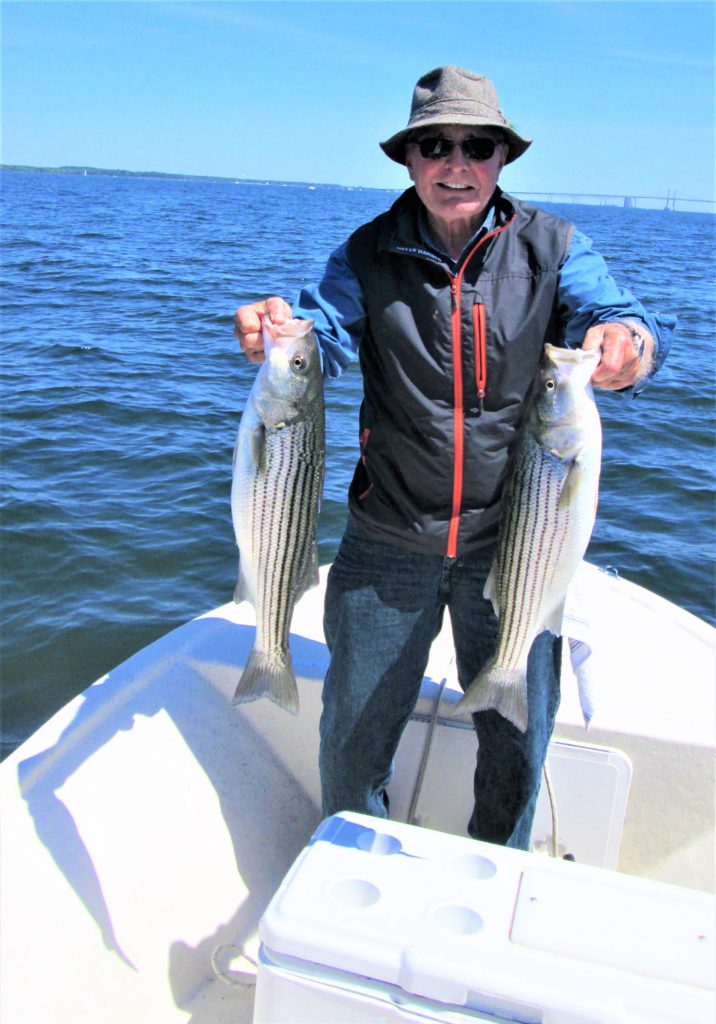Rockfish Season Awaits

By Dennis Doyle
The best opportunity to harvest quality-sized rockfish begins Monday, May 16. Till then the minimum legal size is 35 inches, a difficult mark to achieve given the current rockfish population difficulties.
Starting Monday, the minimum size for a keeper in the main stem of the Chesapeake drops to 19 inches with a possession limit of one and the chances for a larger fish from 25- to 30-plus inches substantial. The reason, of course, is that a lot of sizeable migratory stripers are still in the Bay post-spawn and many are pausing, schooling up and feeding in the mid-Bay for their long trip back to the Atlantic.
That gives an angler a good chance at a 10- to 15-pound rockfish on light tackle, not a trophy-sized fish, but a prized specimen indeed.
Currently the most productive and popular method of hooking a legal-sized trophy fish is trolling planer boards with six to a dozen or more outfits dragging large baits, umbrella rigs, duplex rigs and even larger affairs. The drawback to this type of angling is that when a strike occurs the boat cannot stop or even slow down without the possibility of a massive tangle of tackle. The angler is committed to reeling in their fish, on heavy 30- to 50-pound conventional tackle, against the pull of a boat moving at four to five knots and challenged by having to thread the struggling beast through the spread of trolling baits arrayed behind. The experience is often less than exciting and can sometimes be exasperating.
The initial phases of the summer season on May 16 now provides anglers with ample opportunities for sizeable fish from sport boats, skiffs and kayaks using cut bait, chumming, chunking, jigging, plug casting, live lining and drifting crab baits on medium weight spin, casting and even fly tackle. These are ideal times to experience the true sporting opportunities of striped bass on tackle matched to their performance.
Although rock will not actively begin to school up in traditional areas for another month or so they can be found in minor concentrations as they leave the spawning grounds. Since the fish are still driven by spawning behavior, anglers must generally rely on electronics to find them, though tributary mouths and wandering schools of baitfish can often hold quantities of good rockfish nearby for periods of time. One general rule of thumb to be aware of is that migratory rockfish will tend to exit the Bay via the western side of the Chesapeake because of tidal flow differences caused by the direction of the earth’s rotation.
The ideal conditions for intercepting stripers by shore are early morning and evenings that coincide with high tide phases. Best baits are jumbo bloodworms, cut menhaden (bunker), spot, white perch, soft and peeler crab. Possession of striped bass is legal from 5 a.m. until midnight, however, the high tide conditions are optimal early and late. Rockfish are often hooked from shore at all hours of the day and night and all tidal phases. Perseverance is paramount.
It must also be noted that rockfish currently can be legally possessed only in the main stem of the Chesapeake; the Bay tributaries will not be open for rockfish angling until June 1.
